|
Marine Rescue
There are a number of marine rescue services in South Australia, these are all operated by highly trained volunteers who give up their own time and often use their own vessels to assist in the searching and rescue of others.
When not involved in rescue operations they can often be seen on weekends patrolling the coastal waters, and are in constant contact via radio to other boats and also search and rescue base stations.
Marine radio base stations are scattered throughout the state and keep a listening watch on all of the marine radio and citizen band emergency channels. They also provide scheduled calls, and updated weather forecasts and warnings for vessels at sea or on coastal waterways. Many of these base stations have been established in individuals own homes, and are monitored constantly.
On receipt of a distress call, phone calls can quickly be made to the Police and other search organisations. Often other emergency services may be required to assist such as the SA Ambulance Service, State Emergency Service, or the MAC rescue helicopters, large scale searches are normally coordinated by the Marine Rescue Coordination Centre (MRCC) in Canberra and also the local Police.
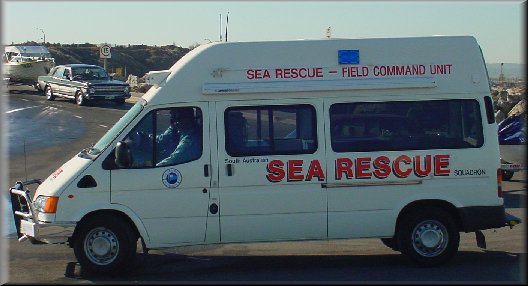
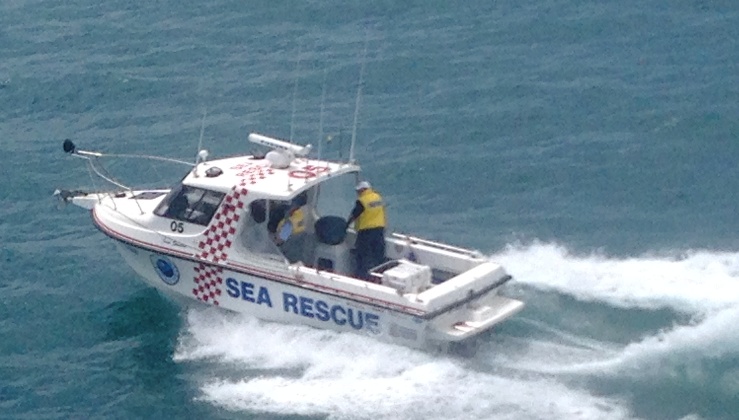
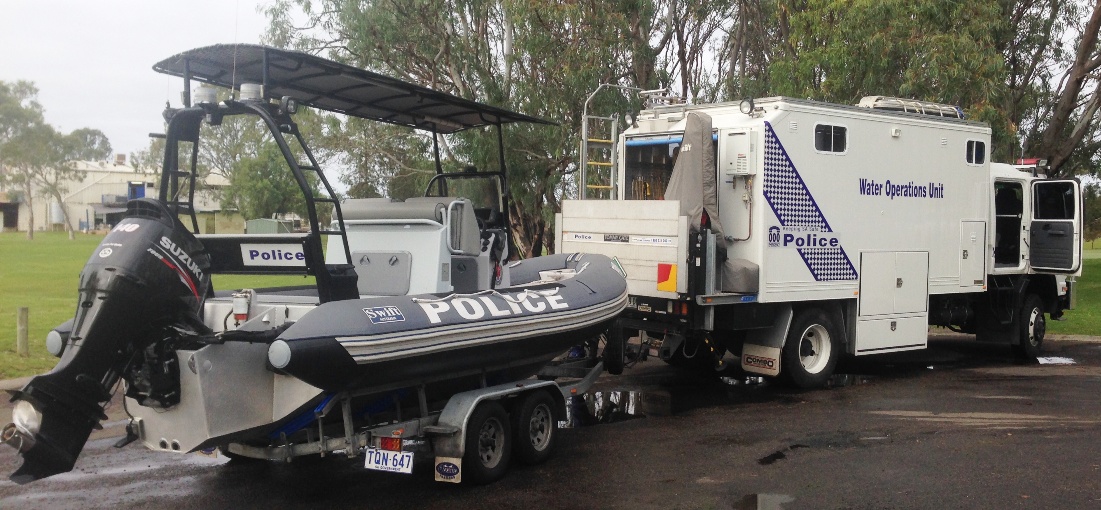
Frequencies
Marine Radio Emergency Frequencies
27MHZ
27.880 - CH 88 - General calling and Distress
VHF
156.800 - Ch 16 - General calling and Distress
156.375 - CH 67- Secondary calling and distress
Marine Radio Repeater Network
VHF
161.650 - CH 21 - Kangaroo Island North (Mt McDonnell)
161.700 - CH 22 - Port Macdonnell
161.625 - CH 80 - Myponga Repeater
161.625 - CH 80 - Elliston Repeater
161.675 - CH 81 - Pt Lincoln Repeater
161.725 - CH 82 - Pt Pirie Repeater
161.725 - CH 82 - Ceduna Repeater
161.725 - CH 82 - Robe Repeater
161.775 - CH 83 - Port Elliot
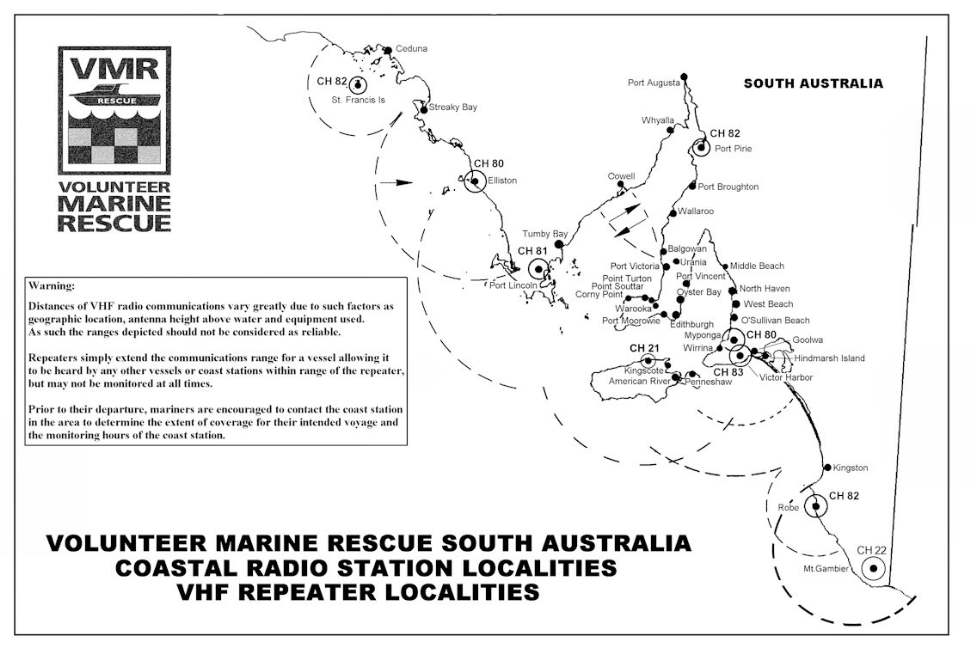
Search & Rescue Organisations
South Australian Sea Rescue Squadron
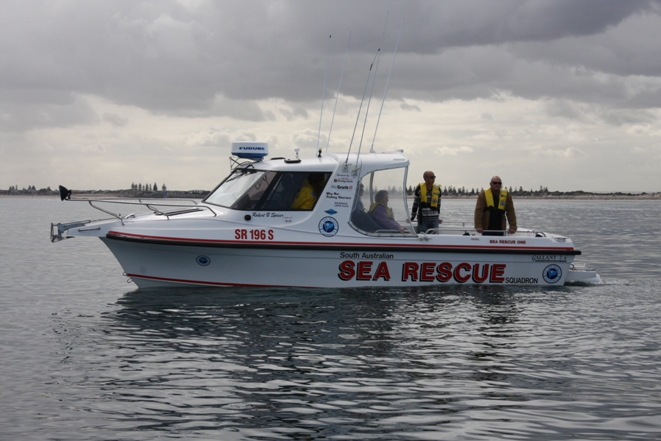
489.325 - CH 4 - Command net - Adelaide - used extensively
488.750 - CH 1 - Command net - Yorke Peninsula
488.975 - CH 9 - S.L.S.A. / Sea Rescue liaison
161.775 - CH 83 - South Coast Squadron (Goolwa / Victor Harbor)
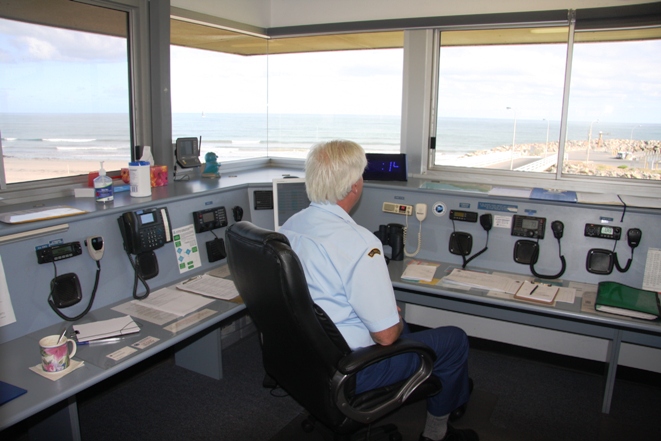 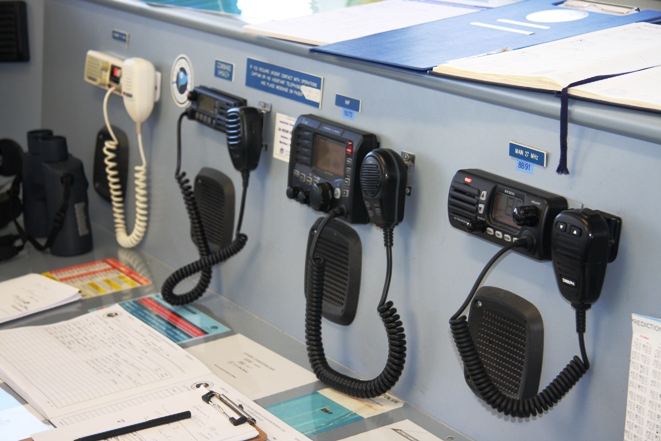
Sea Rescue Adelaide Radio Base
Australian Volunteer Coast Guard
154.575 - CH 29 - Coast Guard Base Stations
Surf Life Saving Association
484.950 - CH 1 Analog Simplex (103.5hz) Simplex - Carnivals
485.000 - CH 2 Analog Simplex (103.5hz) Simplex - Local
489.225 - CH 4 DMR (CC1) Metro
489.100 - CH 5 DMR (CC1) Mid Coast North
489.125 - CH 6 DMR (CC1) Mid Coast South
488.975 - CH 7 DMR (CC1) Myponga
489.725 - CH 8 DMR (CC1) South Coast
487.600 - CH ? DMR (CC1) Glenelg
488.800 - CH ? DMR (CC1) Metro North
Talkgroups:
100 - Operations 1 (All Patrols)
200 - Operations 2
300 - Operations 3
In 2017 Surf Life Saving S.A. upgraded their repeater network to a DMR system. Beach patrols now utilise Tait radios on the DMR network, communicating back to SURFCOM at West Beach. Some activity can also be heard on the SLSA SAGRN talkgroups.
REACT - Marine rescue service (Murray Bridge)
27.680 - CH 68 - Operations
156.625 - CH 72 - Operations
476.525 - UHF CB Channel 5 simplex - Emergency monitoring
476.550 - UHF CB Channel 6 simplex - Operations
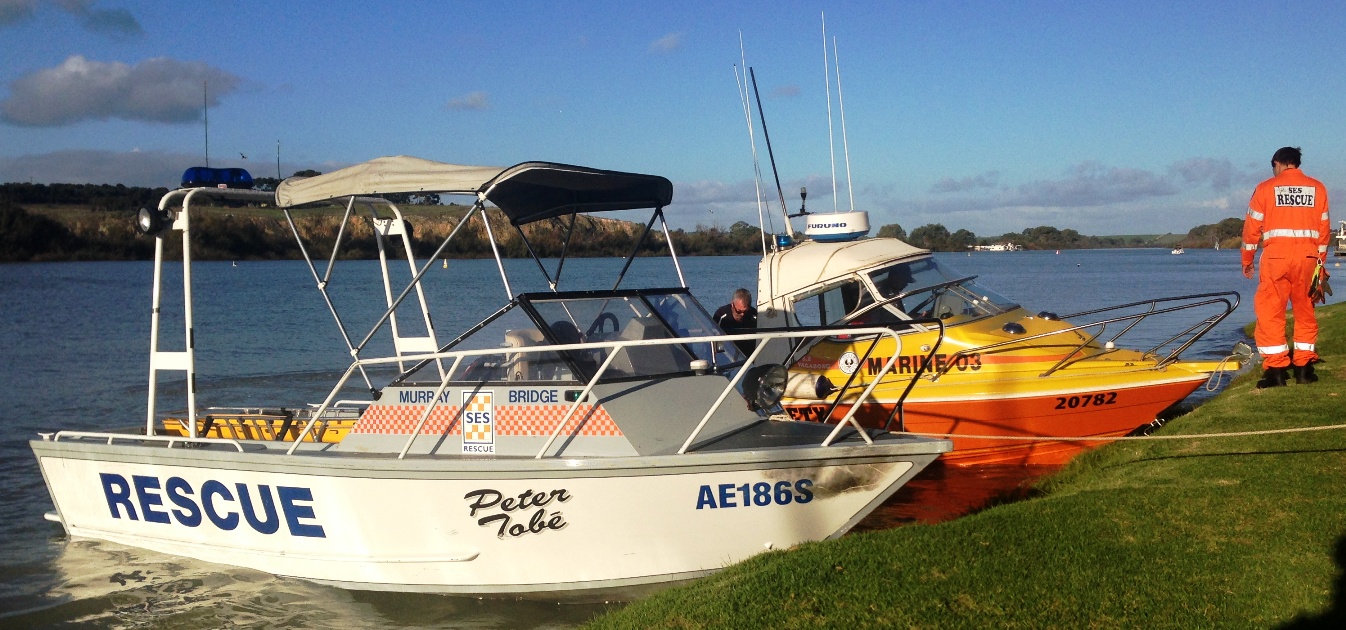
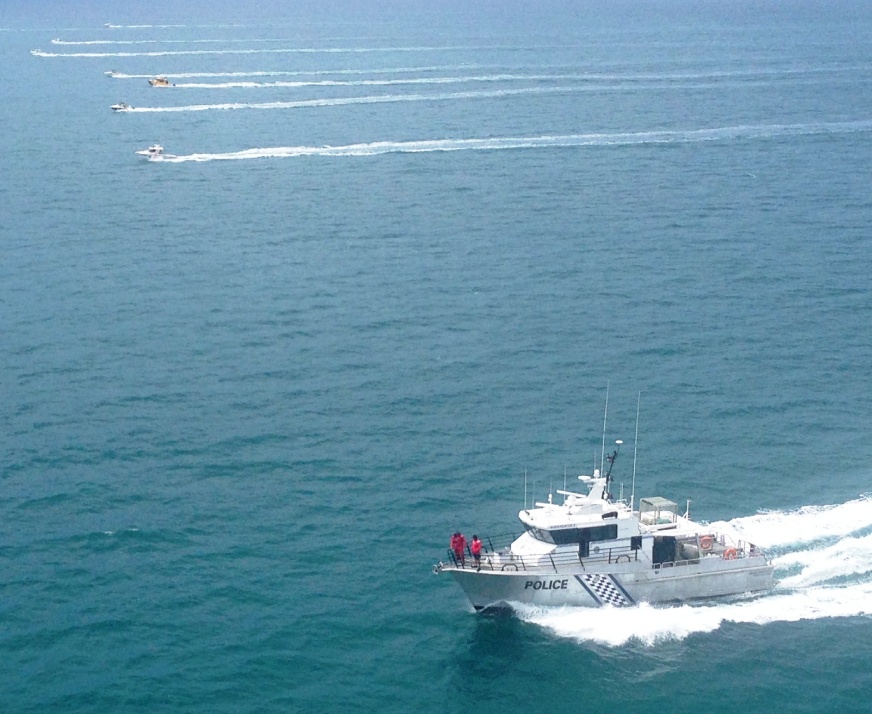
Other Marine frequencies
27MHZ
27.860 - CH 86 - General calling and Distress, Wx reports (Supplementary to 27.880)
27.900 - CH 90 - Coast Station & Ship, Coast Guard
27.910 - CH 91 - Coast Station & Ship, Sea Rescue
27.940 - CH 94 - Messages relating to club events
27.960 - CH 96 - Messages from ship to Ship
27.980 - CH 98 - Search & Rescue Operations
VHF
156.300 - CH 06 - Port Operations (Flinders Ports Tugs)
156.450 - CH 09 - Port Operations (Port Stanvac Desalination Plant)
156.500 - CH 10 - Port Operations (Port Stanvac Desalination Plant)
156.600 - CH 12 - Port Operations (Outer Harbour Signal Station)
156.700 - CH 14 - Port Operations (Glenelg Dredge)
156.800 - CH 16 - Calling and Distress
156.850 - CH 17 - Intraship low power (used on board a vessel)
156.375 - CH 67 - Secondary Calling and Distress
156.475 - CH 69 - Professional fisherman in the Gulfs (often using voice inversion)
156.525 - CH 70 - Digital Selective Call (DSC)
156.575 - CH 71 -
156.625 - CH 72 - Professional fisherman in the Gulfs (Spencer Gulf Prawn fleet - Wallaroo Base)
156.675 - CH 73 - Rescue Organisations (Daily weather reports / safety messages)
156.725 - CH 74 - Sailing clubs
156.775 - CH 75 -
156.825 - CH 76 -
156.875 - CH 77 - Sailing Clubs
156.925 - CH 78 -
160.120 - CH 91 - Flinders Ports Signal Station
158.530 - CH 92 - Flinders Ports (Gate access)
Marine H.F.
International Distress, Safety and Calling:
2182khz: 4125khz: 6215khz: 8291khz: 12 290khz: 16 420khz
Monitored by Sth Aust Coast Guard Stations:
2182khz: 2201khz: 4125khz: 4428.7khz: 2032khz
Coast Guard and boating around both Gulfs - 2524khz
The SAGRN is fitted to most marine rescue base stations and mobile field command vehicles. It is utilised for statewide communications amongst the base stations and at rescue incidents where multiple agencies are involved. During larger incidents involving many emergency services a Multi Agency talkgroup may also be allocated to facilitate communications.
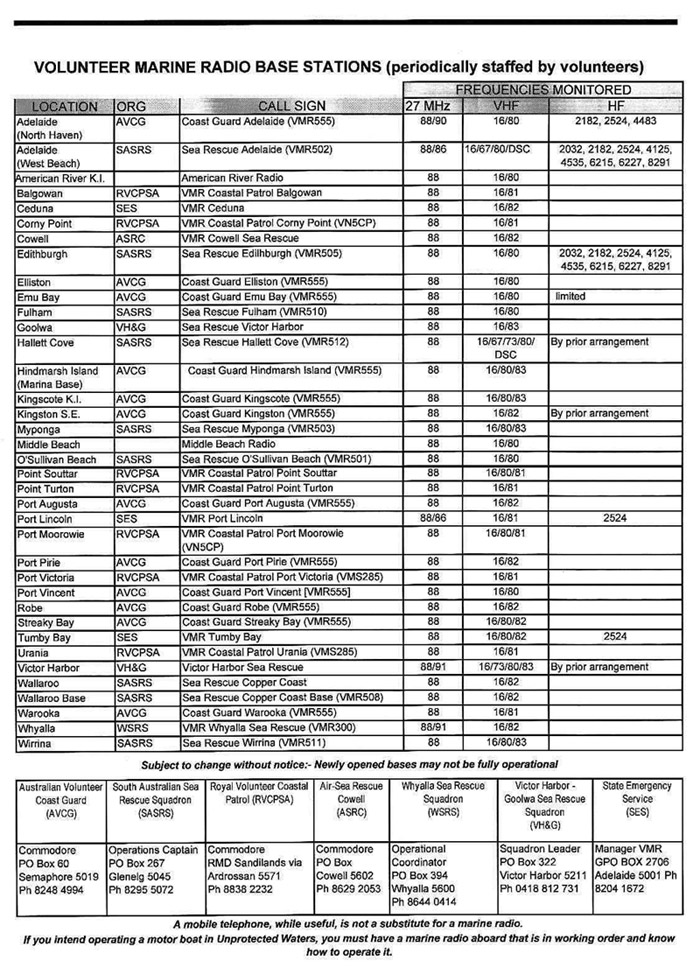
|